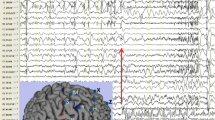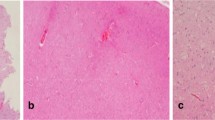Abstract
This study aimed to determine the long-term surgical outcome of pharmacoresistant epilepsy caused by focal cortical dysplasia (FCD) and to identify the important predictors of the favorable surgical outcome. The study retrospectively analyzed the data of pharmacoresistant epilepsy patients with histologically proven FCD in our epilepsy center from May 2010 to December 2014. It included 120 patients with a mean follow-up of 34.6 months. Survival analysis and multivariate regression with Cox proportional hazards model were used to evaluate the rate, stability, and predictors of seizure freedom. The estimated chance of seizure freedom was 73.0 % [95 % confidence intervals (CI), 65.2–80.8 %] at 1 year after surgery, 70.0 % (95 % CI, 62.2–77.8 %) at 2 years, and 65 % (95 % CI, 53.2–76.7 %) at 5 years and beyond. Most seizure recurrences (85.7 %) happened within 12 months after surgery. The incomplete resection of FCD, presence of interictal epileptiform discharges (IEDs) on 3–6 months postoperative electroencephalography (EEG), and presence of habitual acute postoperative seizure (APOS) were independent predictors of seizure recurrence. However, other factors, such as the FCD type and sleep-related epilepsy, did not significantly influence the surgical outcome. Before becoming pharmacoresistant epilepsy, 30 (25 %) patients responded to antiepileptic drugs with a seizure-free duration of more than 1 year. The surgical outcome is favorable in patients with FCD, which is comparable to that reported in developed countries. The incomplete resection of FCD, presence of IEDs on 3–6 months postoperative EEG, and presence of habitual APOS are powerful predictive factors for seizure recurrence after surgery.


Similar content being viewed by others
References
Barkovich AJ, Guerrini R, Kuzniecky RI, Jackson GD, Dobyns WB (2012) A developmental and genetic classification for malformations of cortical development: update 2012. Brain 135:1348–1369
Blumcke I, Thom M, Aronica E, Armstrong DD, Vinters HV, Palmini A et al (2011) The clinicopathologic spectrum of focal cortical dysplasias: a consensus classification proposed by an ad hoc Task Force of the ILAE Diagnostic Methods Commission. Epilepsia 52:158–174
Harvey AS, Cross JH, Shinnar S, Mathern GW (2008) Defining the spectrum of international practice in pediatric epilepsy surgery patients. Epilepsia 49:146–155
Lerner JT, Salamon N, Hauptman JS, Velasco TR, Hemb M, Wu JY et al (2009) Assessment and surgical outcomes for mild type I and severe type II cortical dysplasia: a critical review and the UCLA experience. Epilepsia 50:1310–1335
Chassoux F, Devaux B, Landre E, Turak B, Nataf F, Varlet P et al (2000) Stereoelectroencephalography in focal cortical dysplasia: a 3D approach to delineating the dysplastic cortex. Brain 123(Pt 8):1733–1751
Kloss S, Pieper T, Pannek H, Holthausen H, Tuxhorn I (2002) Epilepsy surgery in children with focal cortical dysplasia (FCD): results of long-term seizure outcome. Neuropediatrics 33:21–26
Tassi L, Colombo N, Garbelli R, Francione S, Lo Russo G, Mai R et al (2002) Focal cortical dysplasia: neuropathological subtypes, EEG, neuroimaging and surgical outcome. Brain 125:1719–1732
Kral T, Clusmann H, Blumcke I, Fimmers R, Ostertun B, Kurthen M et al (2003) Outcome of epilepsy surgery in focal cortical dysplasia. J Neurol Neurosurg Psychiatry 74:183–188
Cohen-Gadol AA, Ozduman K, Bronen RA, Kim JH, Spencer DD (2004) Long-term outcome after epilepsy surgery for focal cortical dysplasia. J Neurosurg 101:55–65
Fauser S, Schulze-Bonhage A, Honegger J, Carmona H, Huppertz HJ, Pantazis G et al (2004) Focal cortical dysplasias: surgical outcome in 67 patients in relation to histological subtypes and dual pathology. Brain 127:2406–2418
Hader WJ, Mackay M, Otsubo H, Chitoku S, Weiss S, Becker L et al (2004) Cortical dysplastic lesions in children with intractable epilepsy: role of complete resection. J Neurosurg 100:110–117
Hamiwka L, Jayakar P, Resnick T, Morrison G, Ragheb J, Dean P, Dunoyer C, Duchowny M (2005) Surgery for epilepsy due to cortical malformations: ten-year follow-up. Epilepsia 46:556–560
Widdess-Walsh P, Kellinghaus C, Jeha L, Kotagal P, Prayson R, Bingaman W et al (2005) Electro-clinical and imaging characteristics of focal cortical dysplasia: correlation with pathological subtypes. Epilepsy Res 67:25–33
Alexandre V Jr, Walz R, Bianchin MM, Velasco TR, Terra-Bustamante VC, Wichert-Ana L et al (2006) Seizure outcome after surgery for epilepsy due to focal cortical dysplastic lesions. Seizure 15:420–427
Park CK, Kim SK, Wang KC, Hwang YS, Kim KJ, Chae JH et al (2006) Surgical outcome and prognostic factors of pediatric epilepsy caused by cortical dysplasia. Childs Nerv Syst 22:586–592
Siegel AM, Cascino GD, Meyer FB, Marsh WR, Scheithauer BW, Sharbrough FW (2006) Surgical outcome and predictive factors in adult patients with intractable epilepsy and focal cortical dysplasia. Acta Neurol Scand 113:65–71
Kral T, von Lehe M, Podlogar M, Clusmann H, Süssmann P, Kurthen M et al (2007) Focal cortical dysplasia: long term seizure outcome after surgical treatment. J Neurol Neurosurg Psychiatry 78:853–856
Kim DW, Lee SK, Chu K, Park KI, Lee SY, Lee CH et al (2009) Predictors of surgical outcome and pathologic considerations in focal cortical dysplasia. Neurology 72:211–216
Krsek P, Maton B, Jayakar P, Dean P, Korman B, Rey G et al (2009) Incomplete resection of focal cortical dysplasia is the main predictor of poor postsurgical outcome. Neurology 72:217–223
Chang EF, Wang DD, Barkovich AJ, Tihan T, Auguste KI, Sullivan JE et al (2011) Predictors of seizure freedom after surgery for malformations of cortical development. Ann Neurol 70:151–162
Fauser S, Essang C, Altenmuller DM, Staack AM, Steinhoff BJ, Strobl K et al (2015) Long-term seizure outcome in 211 patients with focal cortical dysplasia. Epilepsia 56:66–76
Mrelashvili A, Witte RJ, Wirrell EC, Nickels KC, Wong-Kisiel LC (2015) Seizure freedom in children with pathology-confirmed focal cortical dysplasia. Pediatr Neurol 53:513–518
Xue H, Cai L, Dong S, Li Y (2016) Clinical characteristics and post-surgical outcomes of focal cortical dysplasia subtypes. J Clin Neurosci 23:68–72
Fauser S, Bast T, Altenmuller DM, Schulte-Monting J, Strobl K, Steinhoff BJ et al (2008) Factors influencing surgical outcome in patients with focal cortical dysplasia. J Neurol Neurosurg Psychiatry 79:103–105
Oluigbo CO, Wang J, Whitehead MT, Magge S, Myseros JS, Yaun A et al (2015) The influence of lesion volume, perilesion resection volume, and completeness of resection on seizure outcome after resective epilepsy surgery for cortical dysplasia in children. J Neurosurg Pediatr 15:644–650
Rowland NC, Englot DJ, Cage TA, Sughrue ME, Barbaro NM, Chang EF (2012) A meta-analysis of predictors of seizure freedom in the surgical management of focal cortical dysplasia. J Neurosurg 116:1035–1041
Nobili L, Francione S, Mai R, Cardinale F, Castana L, Tassi L et al (2007) Surgical treatment of drug-resistant nocturnal frontal lobe epilepsy. Brain 130:561–573
Beghi E, Carpio A, Forsgren L, Hesdorffer DC, Malmgren K, Sander JW et al (2010) Recommendation for a definition of acute symptomatic seizure. Epilepsia 51:671–675
Engel JJ, Van Ness P, Rasmussen T et al (1993) Outcome with respect to epileptic seizures, 2nd edn. Raven Press, New York
Jeha LE, Najm IM, Bingaman WE, Khandwala F, Widdess-Walsh P, Morris HH et al (2006) Predictors of outcome after temporal lobectomy for the treatment of intractable epilepsy. Neurology 66:1938–1940
Jeha LE, Najm I, Bingaman W, Dinner D, Widdess-Walsh P, Luders H (2007) Surgical outcome and prognostic factors of frontal lobe epilepsy surgery. Brain 130:574–584
Jehi LE, O’Dwyer R, Najm I, Alexopoulos A, Bingaman W (2009) A longitudinal study of surgical outcome and its determinants following posterior cortex epilepsy surgery. Epilepsia 50:2040–2052
Spencer SS (2002) Neural networks in human epilepsy: evidence of and implications for treatment. Epilepsia 43:219–227
Simasathien T, Vadera S, Najm I, Gupta A, Bingaman W, Jehi L (2013) Improved outcomes with earlier surgery for intractable frontal lobe epilepsy. Ann Neurol 73:646–654
Malla BR, O’Brien TJ, Cascino GD, So EL, Radhakrishnan K, Silbert P et al (1998) Acute postoperative seizures following anterior temporal lobectomy for intractable partial epilepsy. J Neurosurg 89:177–182
Boonyapisit K, Najm I, Klem G, Ying Z, Burrier C, LaPresto E et al (2003) Epileptogenicity of focal malformations due to abnormal cortical development: direct electrocorticographic-histopathologic correlations. Epilepsia 44:69–76
Marusic P, Najm IM, Ying Z, Prayson R, Rona S, Nair D et al (2002) Focal cortical dysplasias in eloquent cortex: functional characteristics and correlation with MRI and histopathologic changes. Epilepsia 43:27–32
Wagner J, Urbach H, Niehusmann P, von Lehe M, Elger CE, Wellmer J (2011) Focal cortical dysplasia type IIb: completeness of cortical, not subcortical, resection is necessary for seizure freedom. Epilepsia 52:1418–1424
Najm I, Jehi L, Palmini A, Gonzalez-Martinez J, Paglioli E, Bingaman W (2013) Temporal patterns and mechanisms of epilepsy surgery failure. Epilepsia 54:772–782
Guerrini R, Duchowny M, Jayakar P, Krsek P, Kahane P, Tassi L et al (2015) Diagnostic methods and treatment options for focal cortical dysplasia. Epilepsia 56:1669–1686
Losurdo A, Proserpio P, Cardinale F, Gozzo F, Tassi L, Mai R et al (2014) Drug-resistant focal sleep related epilepsy: results and predictors of surgical outcome. Epilepsy Res 108:953–962
Harvey AS, Mandelstam SA, Maixner WJ, Leventer RJ, Semmelroch M, MacGregor D et al (2015) The surgically remediable syndrome of epilepsy associated with bottom-of-sulcus dysplasia. Neurology 84:2021–2028
Fauser S, Huppertz HJ, Bast T, Strobl K, Pantazis G, Altenmueller DM et al (2006) Clinical characteristics in focal cortical dysplasia: a retrospective evaluation in a series of 120 patients. Brain 129:1907–1916
Radhakrishnan A, Menon R, Menon D, Singh A, Radhakrishnan N, Vilanilam G et al (2016) Early resective surgery causes favorable seizure outcome in malformations of cortical development. Epilepsy Res 124:1–11
Acknowledgments
The authors are grateful to Jie Wang for her help in data collection and to Haidan Wang for her help in postoperative follow-up. This article is supported by the Beijing Municipal Science and Technology Commission (81171227) and the National Natural Science Foundation of China (81271435; 91332202).
Author information
Authors and Affiliations
Corresponding author
Ethics declarations
Conflicts of interest
The authors declare that they have no conflict of interest.
Ethical standard
This study was compliant with the institutional review board ethical guidelines of SBH and was approved by the relevant ethical committee. All patients involved in this study gave their informed consent prior to their inclusion in the study.
Rights and permissions
About this article
Cite this article
Jin, B., Wang, J., Zhou, J. et al. A longitudinal study of surgical outcome of pharmacoresistant epilepsy caused by focal cortical dysplasia. J Neurol 263, 2403–2410 (2016). https://doi.org/10.1007/s00415-016-8274-1
Received:
Revised:
Accepted:
Published:
Issue Date:
DOI: https://doi.org/10.1007/s00415-016-8274-1




